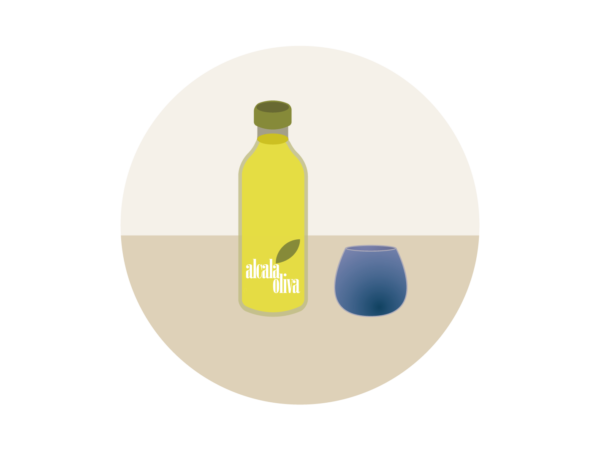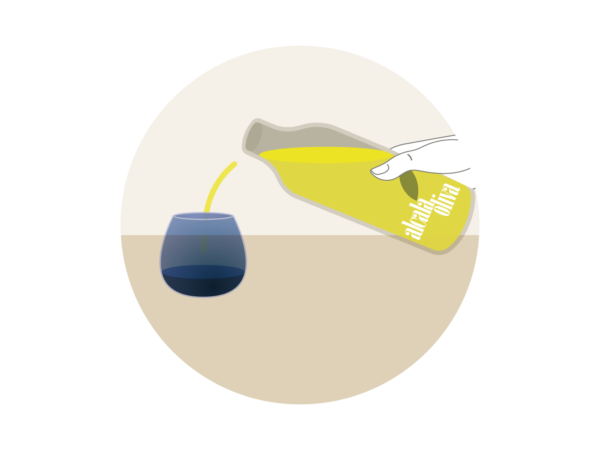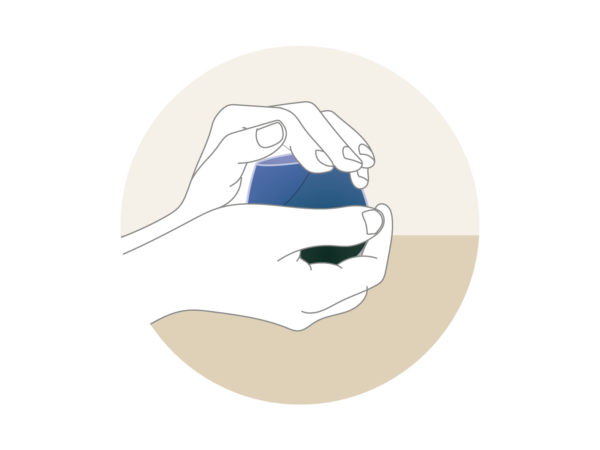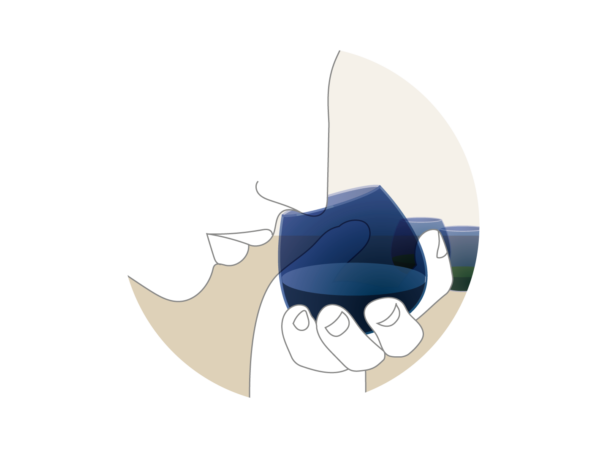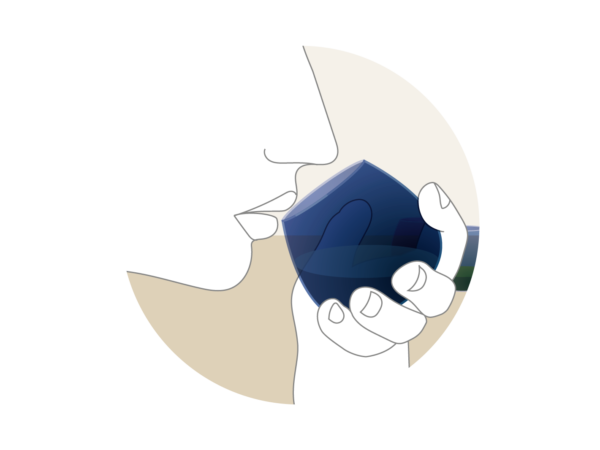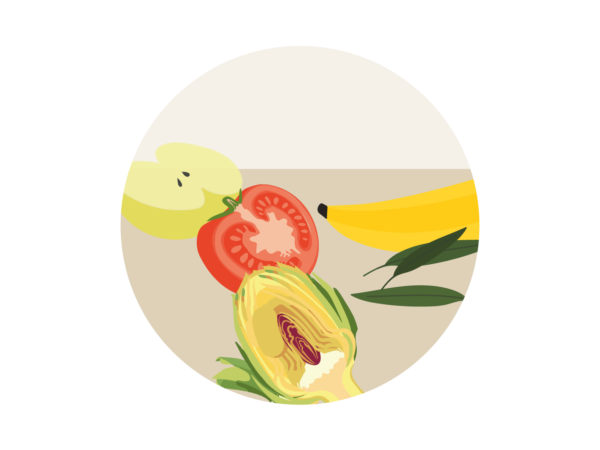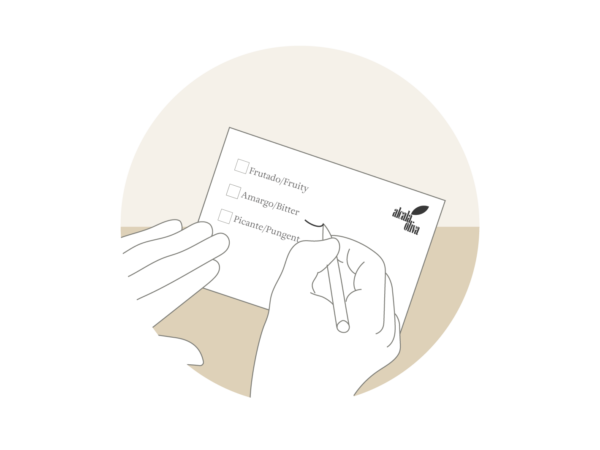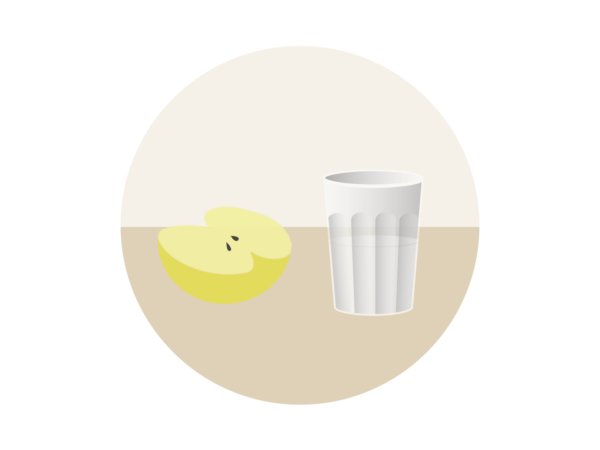OLIVE OIL TASTING
Tasting of virgin olive oil is mandatory before bottling and labelling and is carried out in a laboratory by professional tasters, known as “Panel Test”. This organoleptic analysis, along with the chemical-physical parameters determines whether it can be classified as extra virgin or not.
- 01
- 02
- 03
- 04
- 05
- 06
- 07
- 08
-
The glass cup
The glass cupAs the colour of olive oil is not an indication of quality, professionals use a small blue-tinted glass cup to remove colour bias. At home you can use a wine glass or even small cups.
-
-
Warm the cup
Warm the cupPut your hands around and over the cup and slowly rotate it so the oil sticks to the sides. Warm it for 2 minutes to enhance the volatile aromatic components.
-
Olfactory phase
Olfactory phaseSmell the oil right away. Rotate the cup again and repeat to discover more olfactory notes. You may be surprised by the number of aromatic notes (fruity). Is it green, ripe…?
-
Taste phase
Taste phaseSip enough oil to cover your tongue (3 ml approx.). Slowly inhale introducing air through your mouth (short and successive aspirations); close your mouth, exhale through your nose. Swallow up some oil and note the sensations in your throat.
-
Gustative-retronasal phase: olfactory sensations
Gustative-retronasal phase: olfactory sensationsWhat notes do you catch—Apple? Tomato? Olive leaves? Banana? Artichoke? Do you feel bitterness on your tongue? Pungency in the back of your throat?
-
Positive attributes
Positive attributesYou are now ready to assess the three positive attributes of a good extra virgin olive oil: fruitiness, bitterness, and pungency. Take notes of each sensation and the level of their complexity.
-











